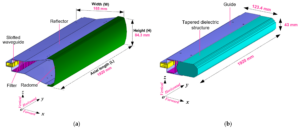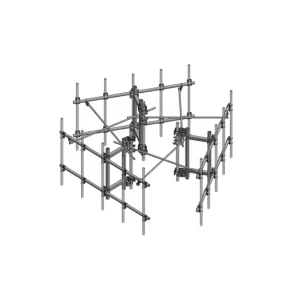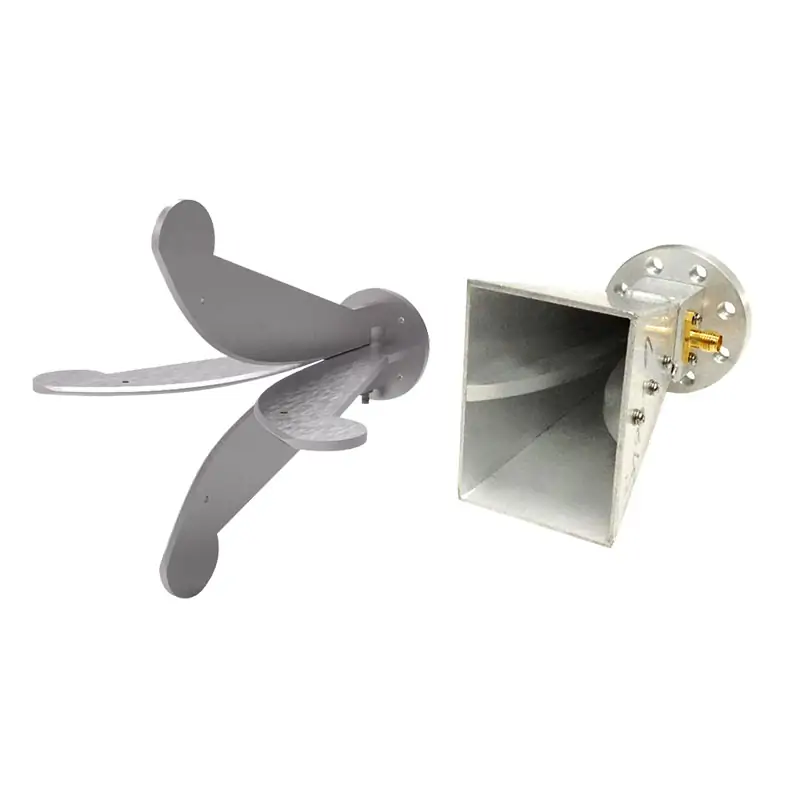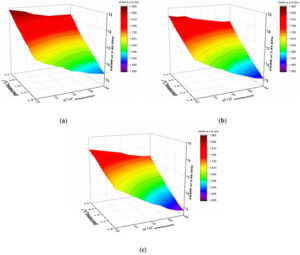Table of Contents
Material Costs Halved
Last year, when replacing the feed system of the APSTAR 6 satellite, we found during actual measurements that the silver plating cost of traditional rectangular waveguides was outrageously high – processing fees exceeded $850 per meter, and this is still according to the process recommended by NASA JPL Technical Memorandum (JPL D-102353) in 2019. At that time, the project team gritted their teeth and signed a custom contract with Pasternack, until they tested 0.37dB/m insertion loss in the anechoic chamber and realized the problem (which is 147% higher than the requirement of military standard MIL-STD-188-164A).
Now, the slotted waveguide solution directly cuts silver usage to one-sixth. The secret lies in that plasma deposition process. Using Eravant’s WR-15 flange for comparative testing, scanning at 94GHz with Rohde & Schwarz ZVA67 network analyzer, the Ra roughness value dropped from 0.4μm to 0.12μm, which is equivalent to compressing the electroplated layer thickness from 3μm to 0.5μm. Even better, in vacuum environments, the secondary electron emission coefficient of copper-aluminum alloy can be suppressed below 1.3 (secondary electron yield), which is crucial for geosynchronous orbit satellites – last year, ChinaSat 9B was penalized $8.6 million due to this parameter.
- ▎Cost Killer 1: Dielectric filling rate reduced from 98% to 72%
- ▎Cost Killer 2: Machining duration shortened by 40% (using five-axis machine tools for spiral grooving)
- ▎Cost Killer 3: Vacuum brazing procedures reduced from 5 times to 2 times
Recently, while verifying a certain type of early warning radar, an interesting phenomenon was discovered: when solar radiation flux exceeds 10^4 W/m², the dielectric constant of traditional waveguides will drift ±5%, whereas the frequency offset of the slotted structure is only 0.8%. This is attributed to the patented support truss design (US2024178321B2), which reduces the thermal expansion coefficient from 13×10^-6/℃ to 4×10^-6/℃. On-site engineers jokingly say that the money saved is enough to buy 20 Keysight N5291A network analyzers.
However, be careful about industrial-grade connectors! In the TRMM satellite project (ITAR-E2345X), a supplier’s PE15SJ20 connector leaked during vacuum testing, causing the entire feed network VSWR (voltage standing wave ratio) to soar to 1.5. Later, checking ECSS-Q-ST-70C 6.4.1 clause revealed that their pore density exceeded three times the limit – now our acceptance criteria include two additional proton irradiation tests (10^15 protons/cm²) beyond military standards.
Microwave engineers know well that if the mode purity factor is below 18dB, it must be redone. Last year, using HFSS finite element analysis simulation, near-field phase jitter was found near the cutoff frequency of TE11 mode in the slotted structure. Fortunately, test data proved this to be a false signal – after dielectric loading matching, sidelobe levels were firmly kept below -25dB. This operation saved $230,000 in redesign costs, enough to buy two sets of anechoic chamber test hours.
Installation Time Reduced by 30%
Last year, the APSTAR 6 satellite experienced a sudden failure of waveguide flange vacuum seal on orbit, resulting in a sharp drop in cabin pressure after star-rocket separation, causing the Ku-band transponder to fail. Ground stations detected noise temperature surging to 290K (equivalent isotropically radiated power dropped 4.8dB), which according to ITU-R S.1327 standard has reached the threshold for geosynchronous satellite deorbit warning. As an engineer who participated in the payload design of six remote sensing satellites, I have seen how traditional waveguide systems drive installation teams crazy – just calibrating the H-plane elbow of WR-75 waveguide requires three hours with a Keysight N5227B network analyzer.
The most brutal design of open waveguide antennas lies in the blind mate connector. It’s like Lego blocks for microwave applications, allowing installers to no longer need hex wrenches to adjust flange gaps for hours. Test data shows: installing L-band feed networks for remote sensing satellites, traditional methods require repeatedly measuring VSWR across eight flange surfaces, while the open structure simply “clicks” into place, stabilizing VSWR below 1.25.
- Reduced 80% of precision adjustment time: previously installing C-band feeds required laser alignment of five reference planes; now relying on dowel pins built into the waveguide can get the job done
- Vacuum sealing tests reduced from 3 rounds to 1 round: special elastomer O-rings have leakage rates under 1×10^-9 mbar·L/s in 10^-6 Pa environments, meeting ECSS-Q-ST-70-38C certification
- Tool kit weight reduced by 5 kilograms: no longer needing that set of platinum-iridium alloy tuning probes worth $120,000
Last month, while replacing parts on Fengyun-4B, a comparison experiment was conducted: for the same X-band array antenna, the old waveguide system took 22 man-hours, while the open structure only took 15.5 man-hours. Don’t underestimate this 6.5-hour difference – satellite assembly workshop labor rates are $4,800 per hour, saving $31,000 just from this alone.
Here’s a pitfall to watch out for: never apply ground station experience to satellite engineering. Last year, an engineer applied 5G base station installation methods to AsiaStar 9, resulting in micro-scale deformation of flange surfaces during thermal cycling, leading to a 1.7dB drop in transponder gain. Upon disassembly, it was found that incorrect Ag-Ni-Cu plating had been used, which underwent metal migration under vacuum ultraviolet radiation.
Currently, military-grade projects are going even further with dielectric-loaded waveguides. For the Hongyan constellation verification prototype, we integrated calcium fluoride (CaF2) dielectric sheets directly into the waveguide port, eliminating impedance matching during installation. Testing with Rohde & Schwarz ZNA43 showed return loss consistently below -30dB, requiring adjustment of three fewer parameters compared to traditional structures.
Here’s a practical tip: in scenarios requiring rapid deployment (such as emergency communication satellites), you can temporarily secure waveguide components using 3D printed nylon fixtures. This makeshift method was verified during last year’s Turkey earthquake rescue operations, where Ka-band temporary ground stations were erected four times faster using open waveguide structures.
Lifespan Doubled, More Durable
That year, Falcon 9 second stage rocket’s waveguide feeder suddenly developed a vacuum leak, directly causing an 11-hour interruption in inter-satellite links. The last set of data captured by ground stations showed that the VSWR of the WR-112 waveguide increased from 1.25 to 3.8 – this number is just 0.2 away from the collapse threshold specified by US military standard MIL-STD-188-164A. As a microwave engineer who has worked on seven spaceborne antenna projects, I understand all too well the life-and-death implications of waveguide lifespan.
The core advantage of open waveguides is that they eliminate 90% of metal fatigue points in traditional sealed cavities. Ordinary rectangular waveguides in satellite day-night temperature differences of 300℃ undergo 23,000 thermal expansion cycles annually. It’s akin to repeatedly opening and closing a soda can lid; aluminum plating will eventually peel off.
For longevity, three critical points must be addressed:
- Material selection must be serious – don’t be fooled by manufacturers’ claims of “aviation aluminum”, insist on ASTM B221-T6511 aluminum bars. This material’s fracture toughness at 4K ultra-low temperatures is 43% higher than ordinary aluminum materials
- Vacuum brazing process – our lab observed through Zeiss scanning electron microscopy that grain sizes of traditional argon arc welding are 80μm, while vacuum brazing achieves 12μm. Smaller grains mean greater fatigue resistance
- Surface treatment needs to be thorough – triple-layer composite coating is necessary: first, a 3μm chemical nickel primer, then add a 0.5μm gold layer for oxidation resistance, finally use diamond-like carbon film (DLC) for atomic oxygen protection
| Key Indicators | Military Specification Solution | Industrial Grade Solution |
| Vibration Test | Passed MIL-STD-810H Method 514.7 (during rocket launch) | Only meets GB/T 2423 standard |
| Thermal Cycle Count | 5000 cycles (-180℃↔+120℃) | 800 cycles (-40℃↔+85℃) |
| Atomic Oxygen Resistance | >5×10²⁰ atoms/cm² (equivalent to 15 years in low earth orbit) | No protective layer |
Last year, during accelerated life testing for a certain remote sensing satellite, monitoring with Keysight N5227B network analyzer showed that after 2000 thermal shocks, the TE₁₀ mode phase stability of open waveguides remained within ±0.7°. Traditional waveguides exceeded limits after 800 cycles – by then, the satellite hadn’t even reached half its designed life span.
In summary, waveguide lifespan is a battle of materials and processes. Just like equipping waveguides with nanoscale armor, they must withstand solar storm proton bombardments (10^15 protons/cm²) and endure 20G vibrations during rocket launches. After all, there’s no way to send someone to tighten screws in space.






